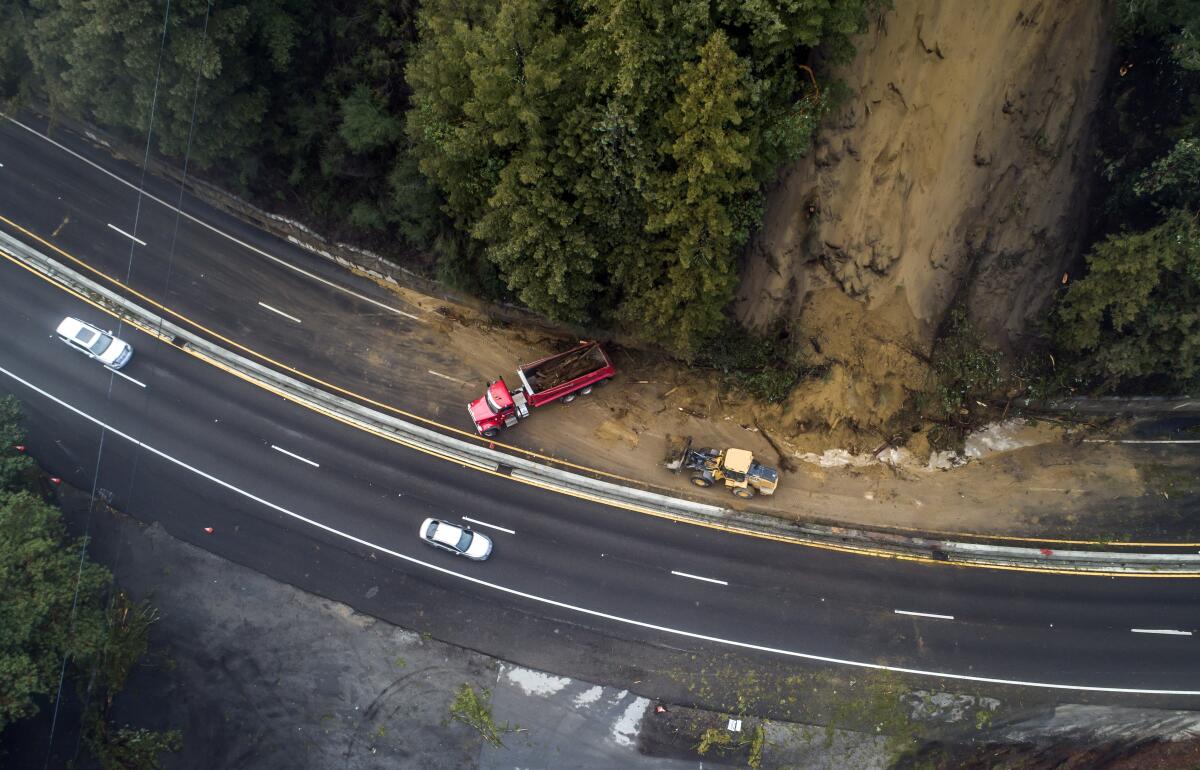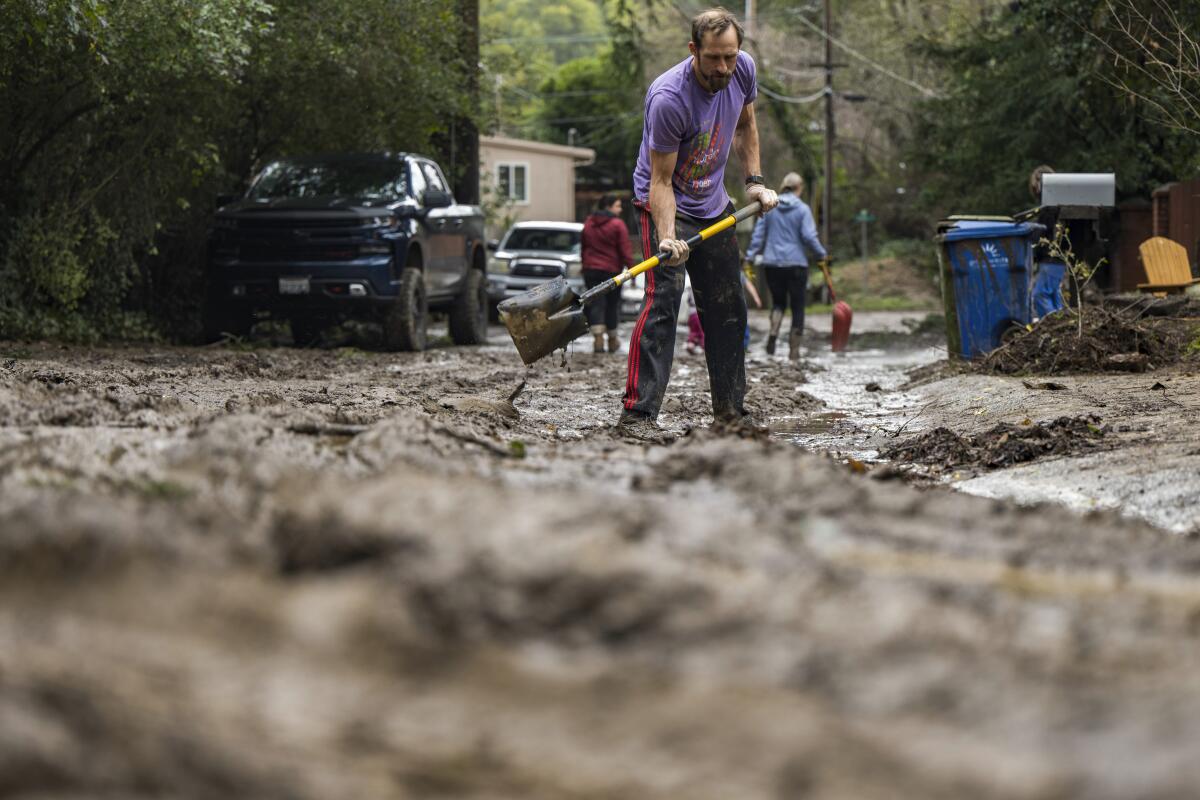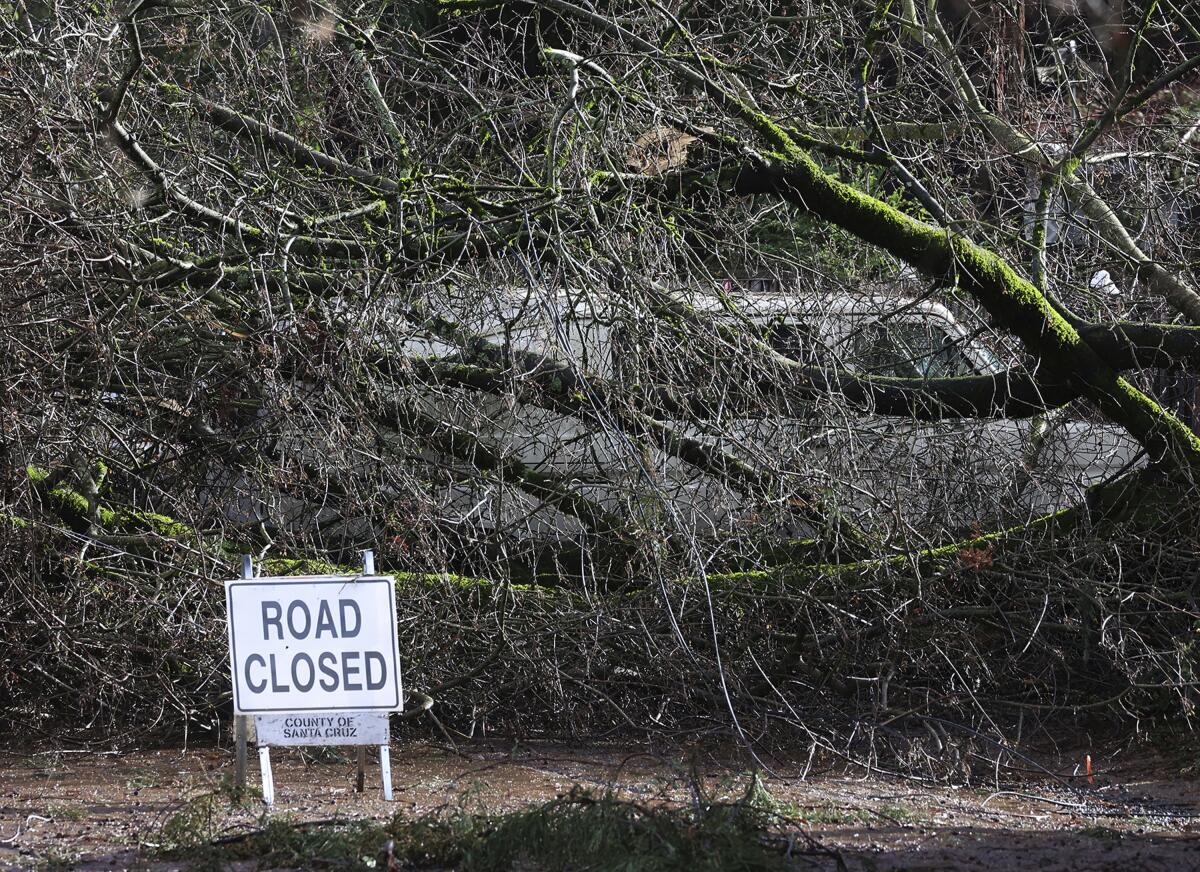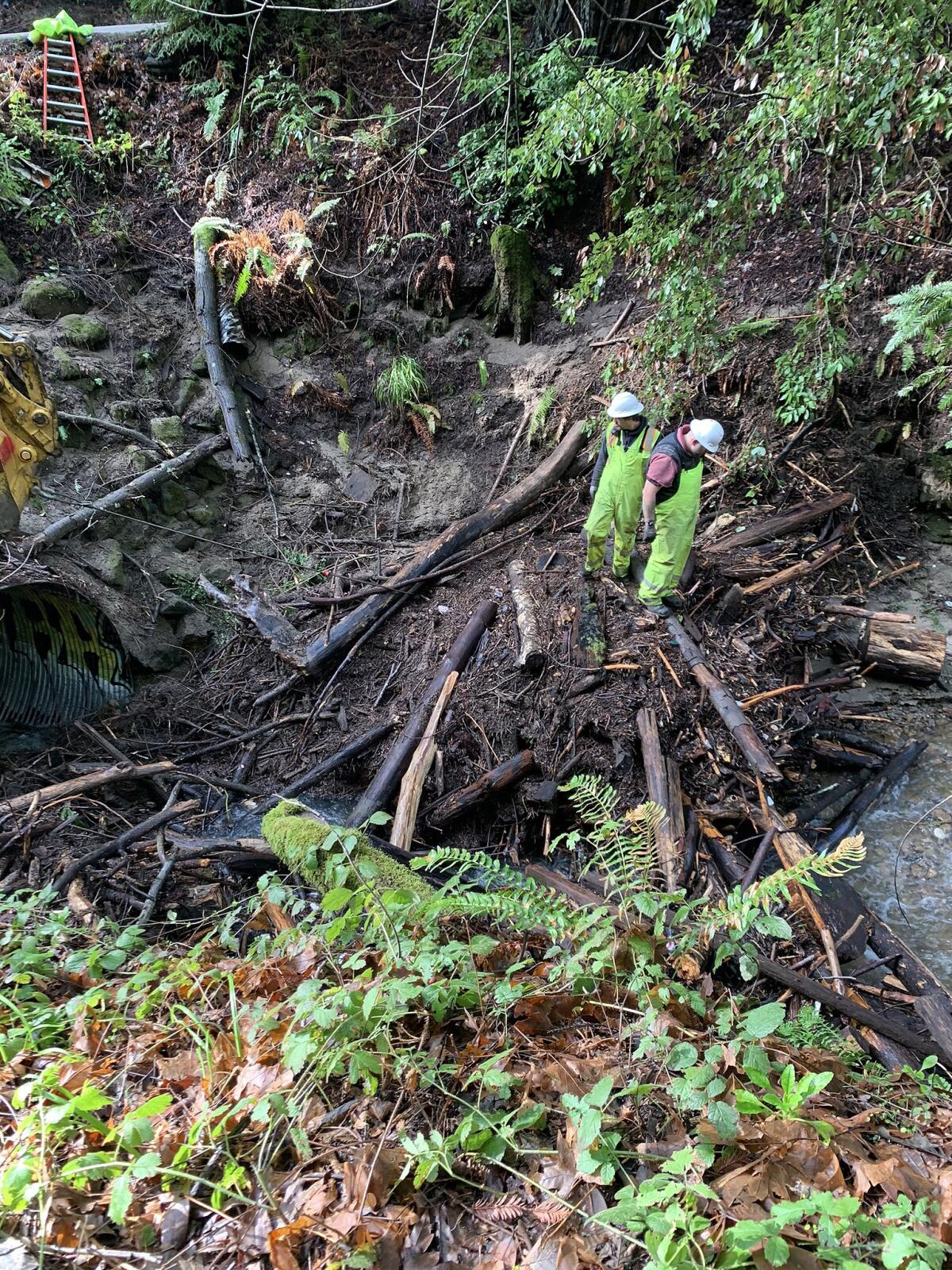The rain paused, but the work hasn’t for road crews battling nature’s wrath

- Share via
FELTON, Calif. — The 11-man crew assembled at the Felton office of Santa Cruz County’s Department of Public Works, waiting to hear what physical and mental toil they were going to be assigned.
With a break in the rain and wind after days of deluge, Jose Rodriguez, their supervisor, was desperate to get them out before the weather changed again. Their task: clearing away the evidence of nature’s wrath, helping this small town in the Santa Cruz Mountains limp back to life.
“I have 60 work orders open. They range from — oh, sorry. I have to get that,” he said Thursday morning, putting the phone to his ear and then mouthing, “Here’s another one. Sixty-one.”
It was still dark and foggy at 7 a.m., when the men strolled into the office. They collected blaze-yellow protective gear from lockers in the back, donned hard hats and tugged at thermoses of coffee and cans of Rockstar — readying for another long and grueling day.
“I’ve clocked 80 hours of overtime in the last two weeks,” said Rob Newey, 47, a large-equipment operator and deputy supervisor.

Since New Year’s Eve day, when the skies opened up over Northern California, this crew, ranging in age from their mid-20s to 61, has been out on the roads, rivers and hillsides of these redwood-forested mountains, responding to river overflows, flooding, debris flows and caved-in roads.
Santa Cruz County has been one of the hardest-hit areas in this recent devastating parade of storms. Its coastline was battered. Waves tore apart Capitola Wharf, took down a sidewalk, fence and part of Santa Cruz’s iconic West Cliff Drive and pummeled seaside restaurants and shops.
The county’s mountains didn’t fare much better. Since Dec. 26, more than 20 inches of rain have fallen there. High winds knocked down trees and utility poles. Entire homes, streets, shops and parks along the San Lorenzo River and its tributaries were submerged underwater. Debris flows and swollen creeks blocked roads and highways, marooning hundreds of people for hours and, in some cases, days.
“Yeah, there’s no access to my house,” said Ben Caldwell, 27, who lives in Boulder Creek off of China Grade — the name of both a mountain and a winding high-elevation road just east of Big Basin State Park.
Asked how he got to work, he said he had to “tightrope” the length of a downed redwood over a stream; neighbors had put together a pulley system so they could transport bags and other items over the span, allowing those crossing to keep their balance.
“I’m from the mountains,” he said. “We make do.”

It’s an ethos shared by most people who live in these steep, lush, redwood-filled mountains. They know floods, wildfires and windstorms are part of the package, so most everybody wears sensible shoes and drives with a chain saw in the back of the car.
But it’s been a long time since they’ve had a steady onslaught of precipitation like this.
And that extended period of dry tranquility — combined with the devastating effects on trees and soil from the 2020 CZU Lightning Complex fire (which burned 86,500 acres and killed one person) and the persistent drought that has gripped the region — allowed for a massive accumulation of dead and dying debris in the forest.
All of that washed downhill when the relentless rains began, blocking roads and gumming up rivers and culverts.
It was for one such pile-up that Newey and three of his crew — including Caldwell — were tasked Thursday morning.
At a tunnel below Lompico Road, where the Lompico River crosses from one side to the other, a colossal pile of dead trees, logs and branches and a surprising number of small 1-ounce liquor bottles blocked the upstream side of the 10-foot-wide culvert opening.
Newey said the road was at risk of damage — or collapse — if they didn’t clear it before the next rains came through.
So, at 9 a.m. (after a few snafus getting the excavator onto the trailer, whose tires were all flat), the four men headed north to the site.
The river and culvert were about 20 feet down from the road. After assessing the situation, Newey rolled the excavator onto the riverbank, removed several boulders in his way and graded the soil flat to get purchase.

Thomas Dunham, 43, and Jacob Smrt, 30, climbed down to the riverbank and began roping up the massive fallen redwoods, which Newey then pulled up with the bucket. It was tedious and treacherous work. Dunham and Smrt walked along and over the slippery logs in the river, occasionally standing waist-deep to get the rope in position, while Newey’s excavator perched precariously above.
After 1 1/2 hours they seemed to have barely made a dent, cleaning the worst of the large offenders out from the culvert opening but still bogged in by an island of debris.
Fred Stevens, 64, and a neighbor, dropped by to look. He said he used to do this kind of work for the city of Santa Cruz but is now happy to watch someone else do it.
“My lower back just can’t take it anymore,” he said. “Oh, it hurts to watch.”
Two hours in, Newey assessed the situation and predicted they probably had several more hours to go.
“People complain that we’re slow or don’t get enough done,” he said. “But you can see, these things take time.”
With the thought of more rain in the forecast, Newey shook his head. “We’ll get this clear today and then maybe have to come back tomorrow or next week and do it again.”
More to Read
Sign up for Essential California
The most important California stories and recommendations in your inbox every morning.
You may occasionally receive promotional content from the Los Angeles Times.









